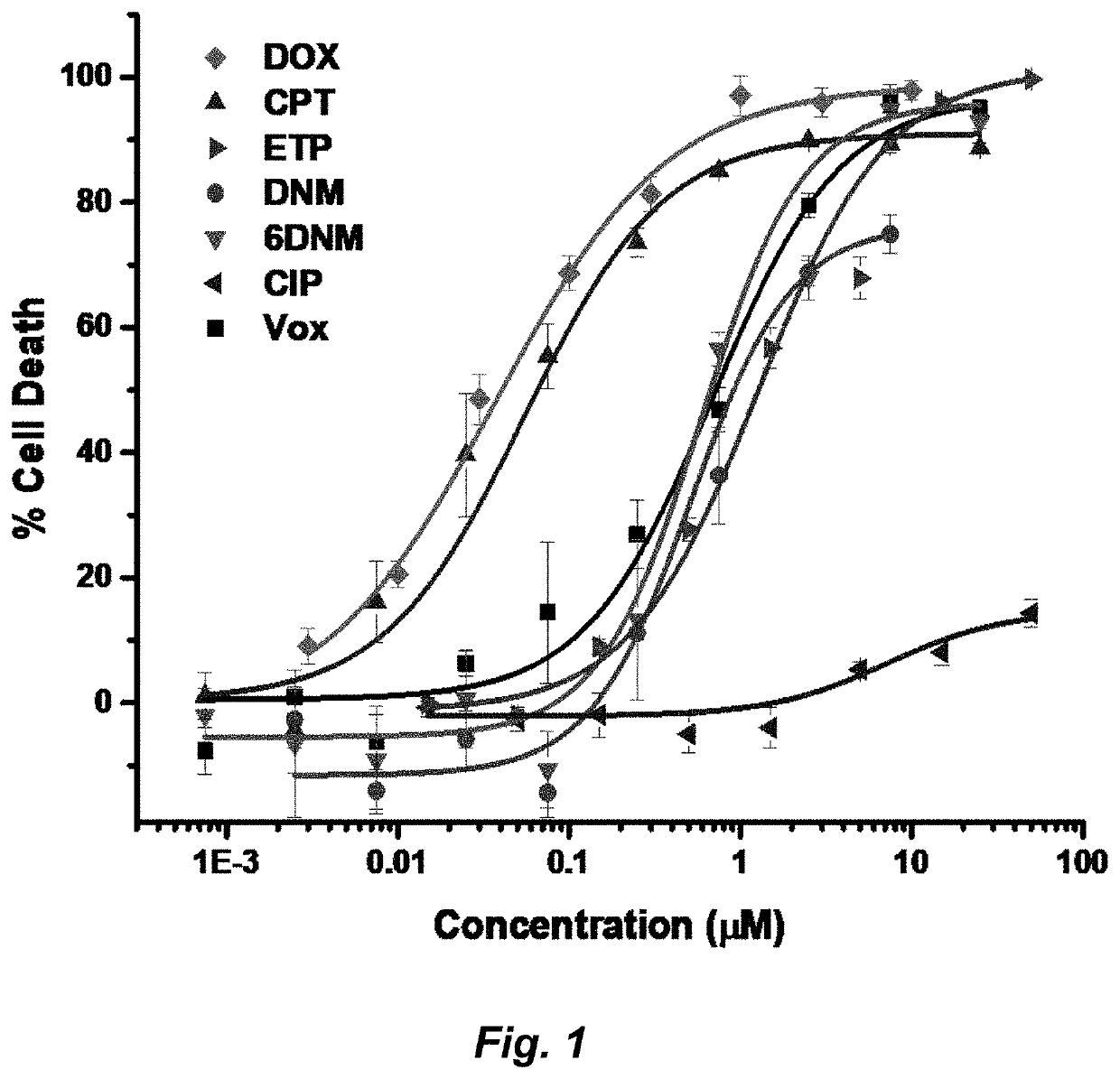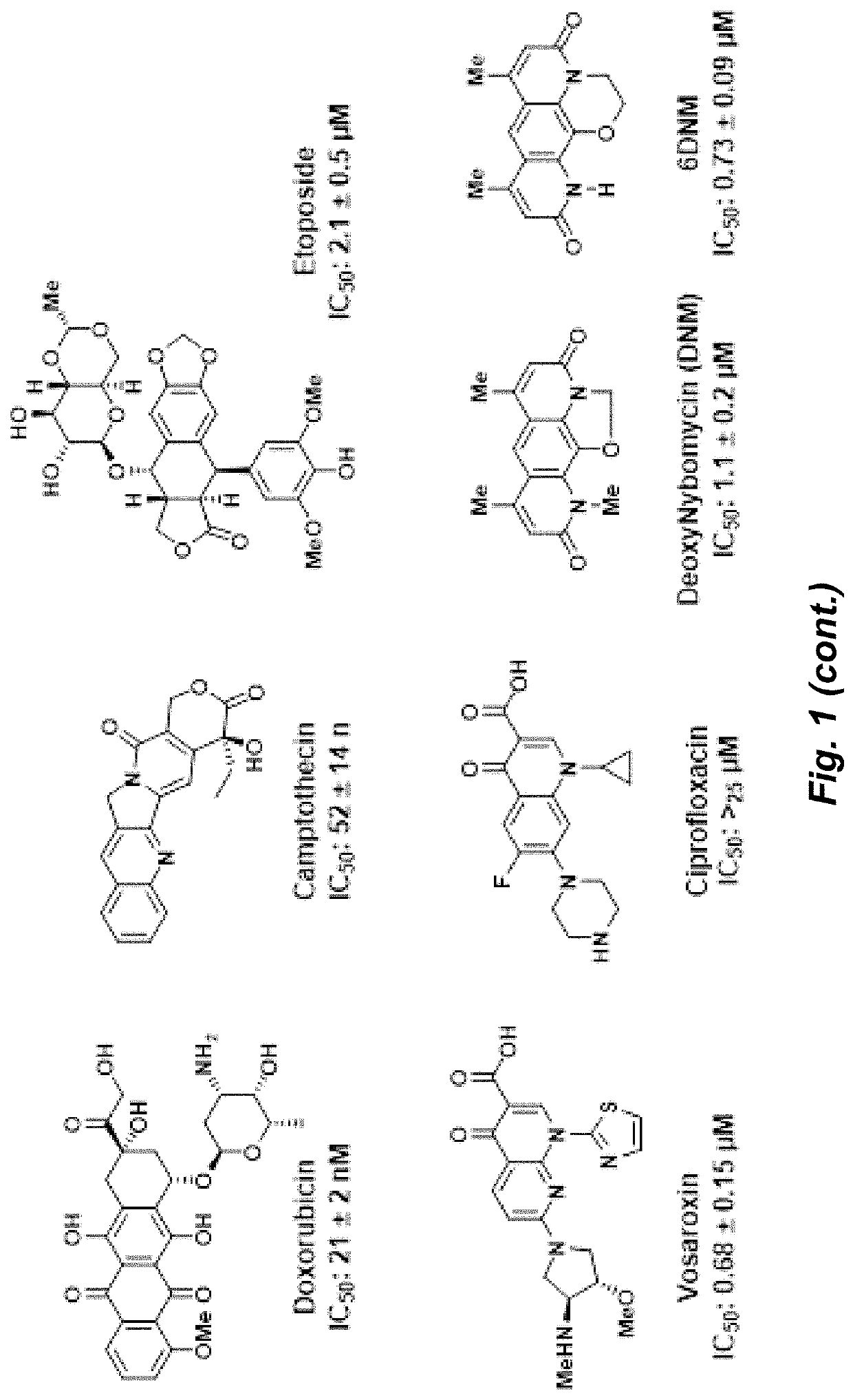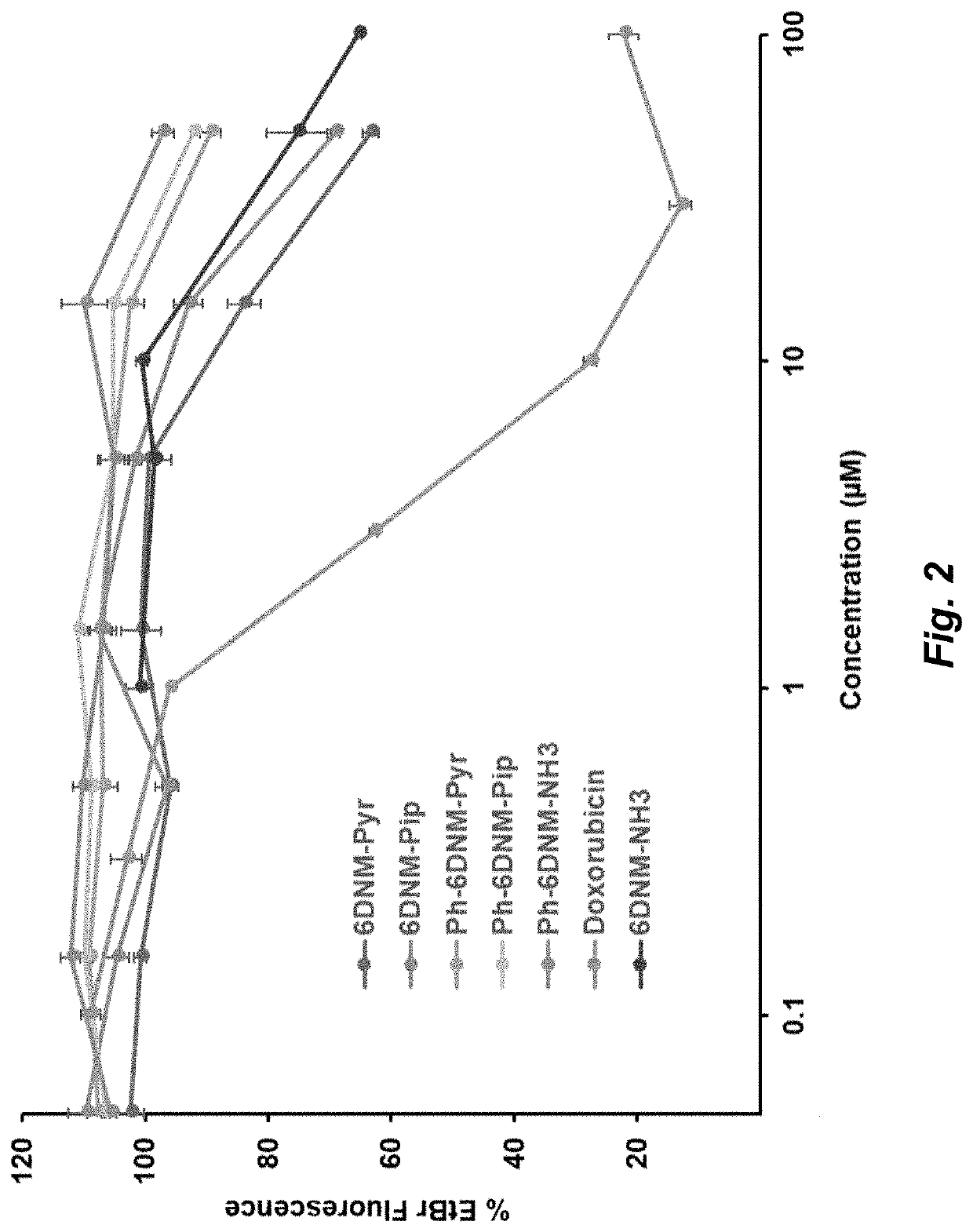Topoisomerase inhibitors with antibacterial and anticancer activity
a technology of topoisomerase inhibitors and antibacterial activity, which is applied in the direction of drug compositions, aerosol delivery, inorganic non-active ingredients, etc., can solve the problems of preventing the development of robust solutions, severe side effects of other anticancer topoisomerase inhibitors, and affecting the antibacterial effect of the antibacterial effect, etc., to achieve high levels of fluoroquinolone resistance, improve antibacterial effect, and improve antibacterial
- Summary
- Abstract
- Description
- Claims
- Application Information
AI Technical Summary
Benefits of technology
Problems solved by technology
Method used
Image
Examples
example 1
Synthesis and Characterization
[0140]General Methods:
[0141]All reactions were performed in flame- or oven-dried glassware under an atmosphere of nitrogen unless otherwise stated. Chemical reagents were purchased from commercial suppliers and used without further purifications. Anhydrous solvents were obtained by passing through columns of alumina under nitrogen using a solvent purifications system. 1H spectra were recorded on Varian Unity 400 or 500 and Bruker 500 equipped with a CryoProbe at 500 MHz. 13C spectra were recorded on a Bruker 500 equipped with a CryoProbe at 125 MHz. Chemical shifts are reported in parts per million (ppm). Spectra obtained in CDCl3 were referenced to the residual solvent peaks at 7.26 ppm (1H NMR) and 77.16 ppm (13C NMR). Spectra obtained in 1:1 MeOD / CDCl3 were referenced to the residual methanol signal at 3.31 ppm (1H NMR) and 49.00 (13C). 1H NMR multiplicities are reported as: s=singlet, br=broad, d=doublet, t=triplet, q=quartet, m=multiplet. All compo...
example 2
ynthesis of Disclosed Compounds
[0284]
[0285]Cross-coupling, for example with a transition metal catalyst, of the boron substituted aryl core with one or more vinyl halide or aryl halide reagent afford the tricyclic or tetracyclic heterocycle. When appropriate, functional groups are deprotected. Bis-alkylation with a non-chiral or chiral alkylating reagent, having optional functional groups such as an amine, forms an additional ring moiety on the heterocycle. Additional deprotection steps can be included when appropriate. The optional functional group (e.g., an amine), when present can be further elaborated by, for example, alkylation or cyclo-alkylation.
example 3
tical Dosage Forms
[0286]The following formulations illustrate representative pharmaceutical dosage forms that may be used for the therapeutic or prophylactic administration of a compound of a formula described herein, a compound specifically disclosed herein, or a pharmaceutically acceptable salt or solvate thereof (hereinafter referred to as ‘Compound X’):
[0287]
(i) Tablet 1mg / tablet‘Compound X’100.0Lactose77.5Povidone15.0Croscarmellose sodium12.0Microcrystalline cellulose92.5Magnesium stearate3.0300.0
[0288]
(ii) Tablet 2mg / tablet‘Compound X’20.0Microcrystalline cellulose410.0Starch50.0Sodium starch glycolate15.0Magnesium stearate5.0500.0
[0289]
(iii) Capsulemg / capsule‘Compound X’10.0Colloidal silicon dioxide1.5Lactose465.5Pregelatinized starch120.0Magnesium stearate3.0600.0
[0290]
(iv) Injection 1 (1 mg / mL)mg / mL‘Compound X’ (free acid form)1.0Dibasic sodium phosphate12.0Monobasic sodium phosphate0.7Sodium chloride4.51.0N Sodium hydroxide solution (pH adjustment to 7.0-7.5)q.s.Water for ...
PUM
| Property | Measurement | Unit |
|---|---|---|
| temperatures | aaaaa | aaaaa |
| temperature | aaaaa | aaaaa |
| temperature | aaaaa | aaaaa |
Abstract
Description
Claims
Application Information
 Login to View More
Login to View More - R&D
- Intellectual Property
- Life Sciences
- Materials
- Tech Scout
- Unparalleled Data Quality
- Higher Quality Content
- 60% Fewer Hallucinations
Browse by: Latest US Patents, China's latest patents, Technical Efficacy Thesaurus, Application Domain, Technology Topic, Popular Technical Reports.
© 2025 PatSnap. All rights reserved.Legal|Privacy policy|Modern Slavery Act Transparency Statement|Sitemap|About US| Contact US: help@patsnap.com



